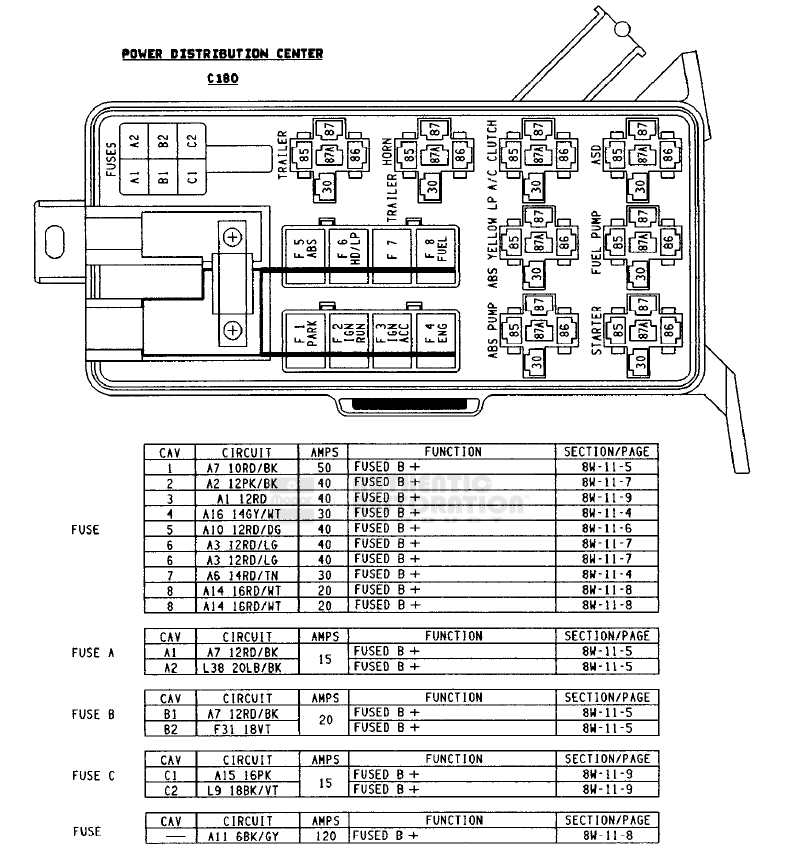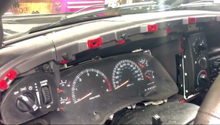Dodge Ram 1994-2001: Fuse Box Diagram
Many electrical problems can be fixed at the fuse box. This guide will show you where your fuse boxes are located and what to do with blown fuses.
This article applies to the Dodge Ram (1994-2001).
Fuses are an important part of your truck. They protect all of the delicate electronic equipment from a short circuit or other electrical failure. Whenever something goes wrong the fuse will burn and break the circuit preventing any further damage. It's much easier to replace a $1 fuse than an expensive electrical component like the radio or the ECU. When something does stop working, it's good to know your fuses and which one needs to be replaced.
Locating the Fuse Box
The Dodge Ram has two fuse boxes: the power distribution center and the junction box. The power distribution center is located under the hood in your engine compartment. Just look for a black box with a removable cover. The junction box is located in the cab at the end of the dash on the driver's side. To access it, you'll need to open the driver's side door and pry off the small cover.

Figure 1. Power distribution box in the engine compartment. 
Figure 2. Junction box behind the dash panel.
Identifying a Blown Fuse
Use fuse box diagrams and labels to locate a potentially blown fuse. You'll find these diagrams either on the panel for the fuse box, in a service manual or online. Identify the fuse connected to your problem circuit and pull it from the fuse box. A blown fuse doesn't always leave burn marks on or around the fuse. There are a pair of connections inside the fuse that you should be able to see through the clear plastic. If these connections are broken, then the fuse is blown and needs to be replaced.
If it's too difficult to tell if the fuse is blown, you can test if the fuse still carries a current. The best method is to use a multimeter set to check for voltage. Connect the positive probe of the multimeter to the fuse and the negative probe to the nearest ground wire. Check both ends of the fuse and compare the voltage. If there's a major difference in the voltage between the two ends, then the fuse is blown and needs to be replaced.

Replacing a Blown Fuse
When replacing a fuse make sure that the replacement fuse has the same type and amp rating as the one it's replacing. Most fuses will be the blade type with two prongs that insert easily into the fuse box. Each electrical component in your truck requires a different rate of electricity so it's important to double check the amp rating. To replace a blown fuse simply pull the bad fuse and insert a good one. Fuses are inexpensive and easy to find at any auto parts store.
Reading Fuse Box Diagrams
Reading fuse box diagrams can be confusing at first, but it's not difficult once you figure it out. The diagrams in the service manuals are followed by a list of each fuse and what it does. Use the list to help you identify the offending fuse, then look up its identifier on the diagram which will match to a fuse in your fuse box. Check that fuse for any issues. If there's nothing wrong, move on to the next most likely candidate.

If you don't have access to fuse box diagrams, follow the related discussion link below for a selection of second generation Dodge Ram service manuals.
Addressing Other Electrical Problems
Fuses break from regular wear and tear and power fluctuations. If a fuse blows shortly after being replaced, it could mean that you have a more pressing electrical issue. You'll want to check the wiring for any frays and check the connectors for corrosion. Sometimes simply cleaning a ground connection of rust or corrosion can fix an electrical problem.
Related Discussions
- 97 Ram 1500 Fuse Layout - Dodgeforum.com
- 2nd Generation Dodge Ram Service Manuals - Dodgeforum.com






